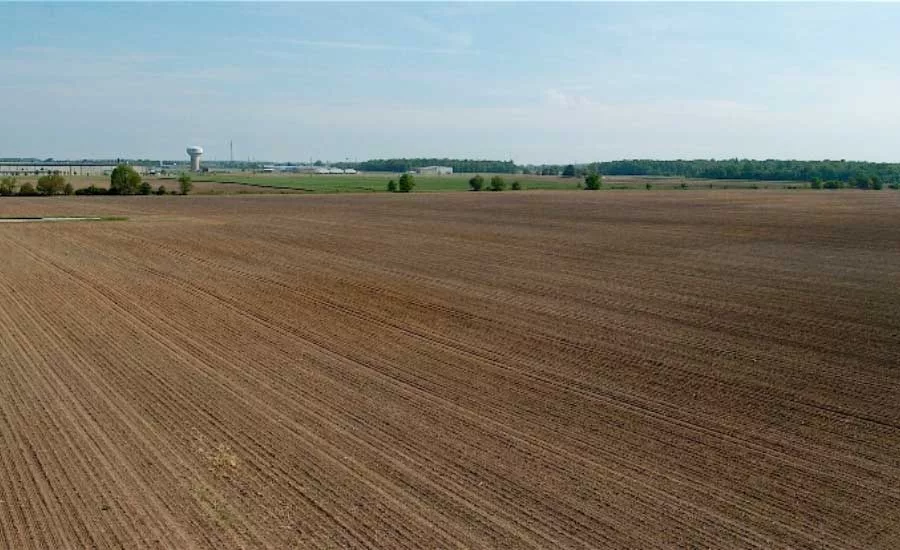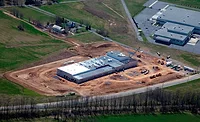Building a future food factory
When looking for a site for a new food or beverage processing plant, land is an important consideration.

This development-ready site certified by The Austin Company was part of an economic development program. Each community and site owner agreed to perform the necessary due diligence in order for certification. Source: The Austin Company.
Maybe your current food plant has finally given up the ghost and is way beyond the point of rehabilitation or renovation. Or possibly your operations have outgrown your facility’s size and capabilities. Whatever the reason, you need to build a new plant.
Site selection can be a daunting task for a number of reasons. Is the location conducive to your needs? Will you find the right employees for the jobs? Can the land support the facility you want to build?
See more articles in this series:
At this year’s Food Automation & Manufacturing Conference, Karl Linck, vice president of engineering for Sargento Foods, gave a presentation on the five “Ls” of food plant site selection. In his decades of experience selecting sites for Sargento, he’s learned that you need to consider these five elements throughout the project, from beginning to end.
“If you don’t do any one of these, you’re going to end up with a mess. If any one piece is missing, it falls apart,” he says.
And the first of these “Ls” is “Land.”
“If you’re doing a site selection, it’s not that easy just to throw in a plant,” he says. “You have to think about how this plant is going to work in the long term and what’s happening in this community—all the things of the future.”
The following is a systematic way to evaluate different plots of land that may or may not be the best place for your future food facility.
Looking aboveground
The first step in considering a particular area for a new food plant is to evaluate the size and determine whether it will meet your operational needs not just for now, but also in the future.
“The thing with land is, you kind of have to think of the future now because, one: it might not be available in the future; and two: it’s going to get really expensive once someone knows you want to expand,” Linck says.
Once you know the plot size you’ll need, then consider the general topography of the area. Is it in lowlands? Then that might not be the best area to be in as it could be prone to flooding.
Also, consider who your neighbors are. For instance, is there a feed lot next door? That might not be the best location, especially for a food plant.
“Things might blow into your plant or get tracked in by shoes,” Linck says. And those things coming from a feed lot have the potential to cause some serious microbial contamination problems.
What’s going on underground?
The next step to evaluating a particular area is to consider the actual land itself, which can be difficult to do because it is, after all, not visible until you start digging. But a site that is perfect to build on will have a number of characteristics.
“What you want is topsoil, then load bearing subsoils, then stable bedrock,” says Linck. “Unfortunately, you might have poor subsoils, where it was marsh at one time, and it can’t support a building.”
Or there might be subsurface water, where the soil turns into a mush, which also won’t support an industrial facility. Also, the land might contain a filled over topsoil, which has been filled in with poor soil, and this might not be visible aboveground.
Moreover, you’ll need to find out if there is any environmental contamination at a site, such as if natural gas was at one time produced in the location.
“If that’s the case, then the soil might leak oil whenever it rains, which can happen for up to a century,” says Linck.
Some land can also have subsurface rock, usually found rather easily once digging in an area. A trickier problem is determining exactly where an escarpment or fault line is. These aren’t necessarily well defined, especially in the Midwest, but locating them can be absolutely crucial.
“If you build across an escarpment, you’ll end up with a cracked building,” Linck says.
Certified food sites
Some communities wanting to attract new development have started to prepare and market their industrial sites as “shovel-ready” or “certified industrial.” Especially if new construction or a build-to-suit is preferred, sites that have been determined to be developed through a credible certification program could offer a benefit.
“Selecting a site that has undergone a detailed certification program will benefit the end user in and number of ways,” says Frank Spano, managing director for The Austin Company.
He says it can uncover critical information on the site, including:
- Site configuration, topography, elevation, soils boring analysis, drainage information.
- Review of zoning, permitting process, state and local agencies having jurisdiction over permits and inspections.
- Environmental reports including, Phase 1 audit, flood plain / wetland determination and delineation (if necessary), archeological, historical artifacts, endangered species, traffic study (if necessary) and others as determined by state and local governments.
Therefore, certified food sites can help mitigate investment risks, including costly construction delays, through accelerated due diligence.
To hear more insightful presentations about the future of food and beverage manufacturing, be sure to attend the 2018 Food Automation & Manufacturing Conference from April 8-11 in Bonita Springs, Fla.
Looking for a reprint of this article?
From high-res PDFs to custom plaques, order your copy today!






